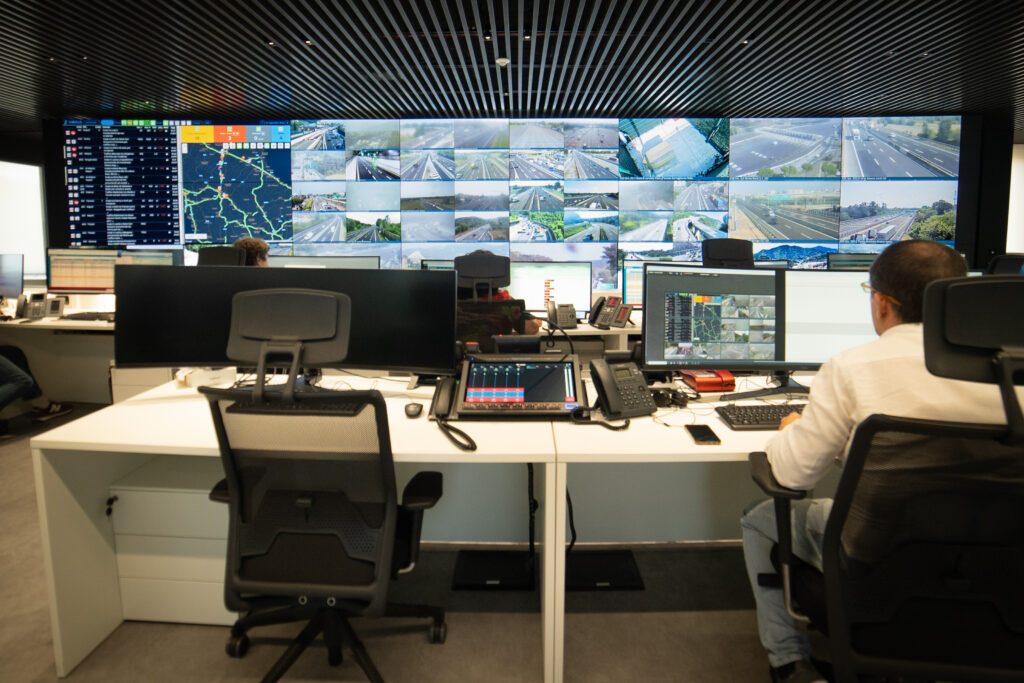Aspi’s Traffic, Plant and Infrastructure Monitoring Centre kicks off, the Control Room, a new technological heart that remotely coordinates traffic and infrastructure status from the headquarters in Rome. The debut coincides with the start of the great summer rush.
In fact, the most intense phase of Italians’ holiday departures begins this weekend. The most substantial movements are expected starting tomorrow, Friday 26 July and Saturday 27 July, leaving the large urban centres and heading for the main routes leading from the North to the holiday resorts in the South, along the A1 Milano-Napoli, the A14 Bologna-Taranto and the A30 Caserta-Salerno. The days marked by the highest traffic volumes will be Saturday 3 and Saturday 10 August. Overall, 28 million Italians are expected to travel along the network operated by Autostrade per l’Italia over the first two weekends of August. Traffic will still be heavy towards tourist resorts on the weekend following the August bank holiday. Returns to the big cities will instead be more diluted and will mainly concern the last three weekends of August.
In order to facilitate summer travel, as per ministerial decree, a ban on the circulation of heavy vehicles is already in force from Friday afternoon for the entire weekend. Autostrade per l’Italia has also drawn up a traffic management plan that provides, among other things, for the removal of the most impactful construction sites along the main stretches of motorway, so that all lanes are available during the busiest periods. The measures adopted and the planned supervision will in any case guarantee the availability of two lanes in the prevailing traffic direction. In addition, manpower and vehicles will be deployed at strategic points to ensure timely intervention in support of users.
To ensure an even better travel experience, ASPI is once again relying on technological innovation: this means digitisation, greater connectivity, more efficiency and more safety. The Traffic, Plant and Infrastructure Monitoring Centre is a unique and more advanced centre that monitors a complex network, both in terms of traffic volumes and the orographic characteristics of the territory it crosses, as well as the high number of bridges, viaducts and tunnels.
The role of the control room is to link the images and information arriving in real time and 24 hours a day from the nine Regional Headquarters located along the 3,000 km network, giving an overall view of the flows and guaranteeing capillary control of the facilities (toll booths, tunnels, cameras, etc.) and the infrastructure through advanced software connected with devices in the field using artificial intelligence, drones and IoT (Internet of things).
The Centre was designed and built by Movyon, a leading company in the development and integration of mobility technologies and Aspi Group’s centre of excellence for research and innovation.
CONTROL ROOM
There are four areas that constitute the new tech site: first, a control room financed by funds complementary to the Italian Resilience Plan: an area dedicated to integrated site planning and the Argo technology platform, which revolutionises structural monitoring, inspection and infrastructure life cycle management, as well as regenerative maintenance and modernisation cycles. Operators can view structural data of bridges, overpasses, viaducts and tunnels updated in real time, digitally navigate the works thanks to Building Information Modeling (Bim) generated in the systems and digital twins created by drones equipped with ultra-high resolution video cameras and Lidar lasers that scan the infrastructure. Data from all planned inspections carried out in the field feed into the platform, and operators can remotely monitor the evolution of defects thanks to the reconstructions provided by the digital twin and the use of artificial intelligence algorithms that enable their timely analysis and evolution over time. The centre also manages the coordination of activities for the installation of IOT sensors on the assets, which enable the collection of data useful for assessing and monitoring their state of health.
With regard to the area dedicated to technological assets, this allows for an integrated monitoring of the state of operation of the facilities in operation on the network: approximately 1.9 million pieces of physical equipment located at 579 tunnel tubes and 2,078 toll collection lanes. This is done through an innovative solution in terms of graphic visualisation (interactive map, digital twin, dashboarding) and functionality (intelligent diagnostics with the implementation of AI tools). A system that, integrated with the specific tools developed for the operating management of the assets, guarantees active monitoring of the evolution of events, of the KPIs (key performance indicators) of the plants, and of the progress of maintenance activities (about 500 maintenance and control plans, and about 450,000 maintenance tickets annually).
Then there is the state-of-the-art Traffic Control Centre for advanced traffic inspection and management. This integrates IT platforms for collecting and processing information, a working environment designed to facilitate the work of the operators, a videowall system to display real-time video streams from devices in the field (4 thousand video cameras and IOT devices), and synoptic maps of the network. The Traffic Control Centre will enable constant monitoring of the traffic situation (2.4 million vehicles per day and 4.7 million travellers), activation of intervention procedures, communication to travellers, traffic forecasts and activity planning.
An emergency management room will also be set up, which will further reinforce the supervision of and response to extraordinary events such as, for example, snowy or extreme-impact weather events. Movyon has also designed an Immersive Room within the Control Centre to provide, through a multimedia experience, the overall picture of the mobility technology innovation of the future that is already operational, or being tested, on the ASPI network.
